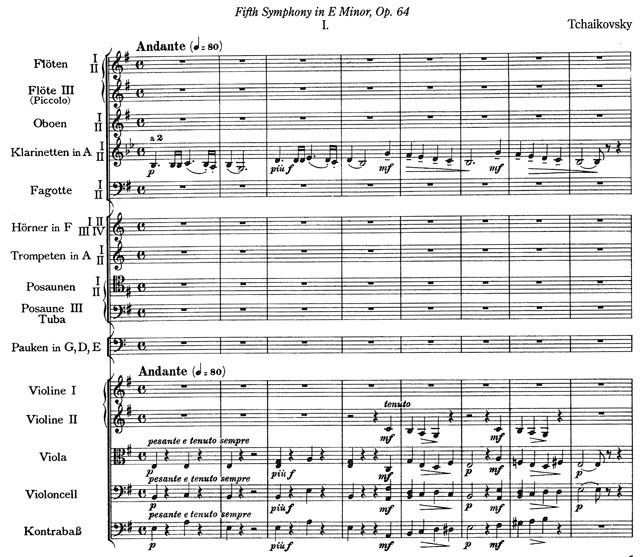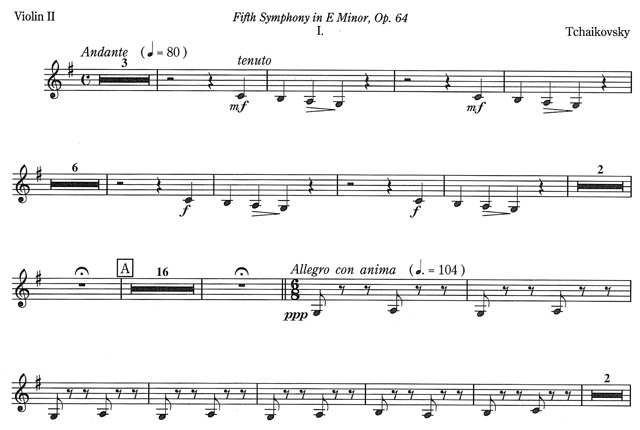The Score and Parts
Score Layout
The first page of music contains the title at the top, centered. In the upper right corner the composer’s (and/or arranger’s) names appear, and in the upper left corner it is wise to indicate whether the score is transposed for the instruments or in the concert key. The transposed score, showing instrument’s pitches as they appear in the parts, is highly recommended. The first line of music is indented slightly, with a double bar, and names of all instruments employed in the piece are spelled out in full. A bracket connects multiple staves for like instruments, such as first and second violins. In the score, bar lines will only connect sections and will be broken between woodwinds, brass, percussion, and strings.
Tempo markings are placed at the beginning of the music above the staff and often added above each section of the orchestra. Dynamic markings are placed below each individual part. Rehearsal letters or numbers are placed at convenient intervals throughout the score, typically at the top of each section. All notes and rests are aligned vertically with all other notes or rests that occur at the same time.

The Parts
A separate copy of each instrumental part found in the score should be extracted for each performer. The first page contains the title of the piece, centered, the composer’s name at the upper right, and the name of the instrument that plays the part at the upper left. Following pages contain the name of the instrument (and part number if it applies), along with a page number. The first staff is indented, and the meter signature appears only at the beginning and at points of change. A clef and key signature are required on every staff. Rehearsal letters as they appear in the score are required, and cues should be indicated after lengthy periods of rest. A cue is written with small notes in the key and range of the instrumental part in which they appear. The original instrument’s name is written above this brief passage, or cue, which occurs a few measures before the entry of the instrument for which the part is written. Rests of two or more consecutive measures are indicated by a solid line in the center of a measure, a multiple rest with the number of measures indicated above. Multiple rests should be divided for rehearsal letters, and an individual rest should be shown with a fermata in all parts if any instrument in the score has a fermata.

FIGURE 1.6 Second violin part: Tchaikovsky, Symphony No.5
The word “tacet,” meaning silent, is used when the performer does not play for an entire movement or, having completed their part, remains silent for the remainder of the piece. In a part where page turns must be made rapidly, “v.s.” (volte subito) is indicated at the bottom of the page. Measures of rest will ideally be placed before the page turns.
